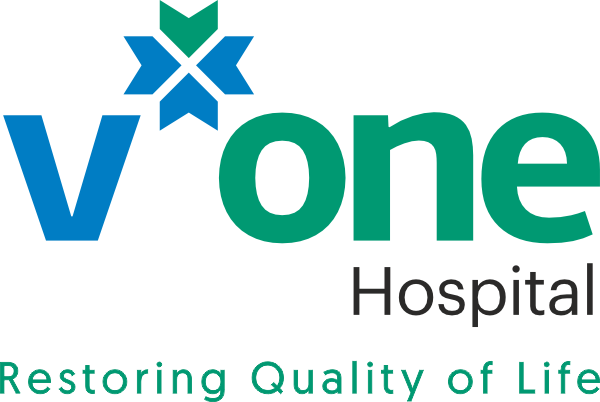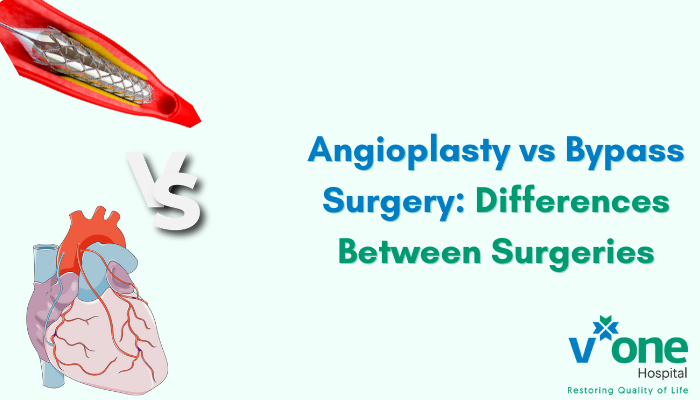Angioplasty vs Bypass Surgery: Know Differences Between Them
Angioplasty vs bypass surgery: Heart health is a paramount concern, and when it comes to interventions, two procedures stand out: bypass surgery and angioplasty. These cardiovascular procedures, while both aimed at improving blood flow to the heart, differ significantly in their approaches. Let’s embark on a detailed exploration of these techniques, unraveling their nuances, benefits, and considerations.
Bypass vs Angioplasty
Let’s find out the differences between angioplasty and bypass surgery:
1. Understanding the Basics
Bypass Surgery (Coronary Artery Bypass Grafting – CABG): This intricate procedure involves rerouting blood flow around blocked or narrowed arteries. A healthy blood vessel, often from the leg, is harvested and grafted to bypass the problematic artery, creating an alternative route for blood circulation.
Angioplasty: Angioplasty is a minimally invasive procedure where a catheter with a deflated balloon is threaded into the narrowed artery. Upon reaching the blockage, the balloon is inflated, widening the artery, and often placing a stent to maintain the expanded state.
2. The Procedure Journey
Bypass Surgery: A more extensive procedure that involves open-heart surgery. The patient is usually under general anesthesia, and the chest is opened to access the heart. The harvested blood vessel is then grafted to create the bypass.
Angioplasty: A minimally invasive procedure conducted under local anesthesia. A catheter is threaded through blood vessels, often starting from the wrist or groin, to reach the affected coronary artery. The balloon is inflated, widening the artery, and a stent may be placed.
3. Recovery Timelines
Bypass Surgery: Involves a longer hospital stay, often ranging from several days to a week. The recovery period at home extends over weeks to months.
Angioplasty: Usually, a shorter hospital stay and many individuals can return home on the same day or the day after the procedure. Recovery is relatively quicker.
4. Long-Term Outcomes
Bypass Surgery: Known for its enduring benefits, especially for complex cases. The bypass graft provides a stable, long-term solution.
Angioplasty: While effective, the need for periodic follow-up procedures is a consideration. Long-term success may be influenced by factors such as lifestyle changes and medication adherence.
5. Risks and Complications
Bypass Surgery: While major complications are infrequent, risks include infection, bleeding, and, in rare cases, stroke.
Angioplasty: Potential risks include damage to the artery, bleeding, or a re-narrowing of the treated artery.
6. Suitability for Different Cases
Bypass Surgery: Often recommended for individuals with diabetes, complex blockages, or multiple affected arteries.
Angioplasty: This may be more suitable for individuals with localized blockages or those considered high-risk for surgery.
7. Financial Considerations
Bypass Surgery: Generally more expensive due to the complexity of the procedure and the extended hospital stay.
Angioplasty: Typically more cost-effective, partly because it is less invasive and involves a shorter hospital stay.
Factors Influencing the Choice Between Angioplasty and Bypass Surgery
The choice between angioplasty and bypass surgery is influenced by several factors, including the patient’s overall health, the severity of the coronary artery disease, and the location of the blockages. For instance, patients with multiple blockages or those with diabetes may benefit more from bypass surgery due to its ability to address complex cases comprehensively. Conversely, patients with single or localized blockages often find angioplasty to be a quicker, less invasive option with fewer immediate risks. Personal preferences, recovery time, and the availability of medical facilities also play a significant role in the decision-making process.
Technological Advancements in Procedures
Technological advancements have significantly improved the success rates and safety of both angioplasty and bypass surgery. Modern angioplasty techniques now include drug-eluting stents that reduce the risk of re-narrowing arteries, while innovations in minimally invasive surgical approaches have made bypass surgery less taxing on the body. Robotic-assisted surgeries and advanced imaging technologies further enhance precision, minimizing complications and improving outcomes. Discussing these advancements with a cardiologist can help patients make informed decisions tailored to their specific needs and medical conditions.
FAQs for Angioplasty vs Bypass Surgery
Q1: Is one procedure safer than the other?
Both bypass surgery and angioplasty are generally safe, but the choice depends on the individual’s health conditions and the severity of the coronary issues.
Q2: How long does each procedure take?
Bypass surgery usually takes several hours, while angioplasty can be completed in less time.
Q3: Can these procedures be done in an emergency?
Angioplasty is often preferred in emergencies, while bypass surgery may be planned for more complex cases.
Q4: Do I need both procedures?
In some cases, a combination of bypass surgery and angioplasty may be recommended for optimal results.
Post-Procedure Care and Lifestyle Modifications
Undergoing angioplasty or bypass surgery is a significant step toward improving heart health, but recovery doesn’t end once the procedure is over. What happens after—how you care for your heart daily—plays a crucial role in long-term success and preventing future cardiac events.
Here are essential lifestyle changes and care tips every heart patient should follow post-procedure:
1. Follow a Heart-Healthy Diet
After your procedure, it’s important to adopt a low-fat, low-sodium diet to reduce the risk of further artery blockages. Include more fresh fruits, vegetables, whole grains, and lean proteins. Avoid processed foods, red meat, fried snacks, and anything high in trans fats or added sugar. A heart-friendly diet helps control cholesterol, blood pressure, and weight.
2. Quit Smoking and Avoid Alcohol
Smoking is one of the leading causes of heart disease and significantly increases the risk of complications after surgery or angioplasty. Quitting smoking is one of the best decisions you can make for your heart. Similarly, alcohol should be avoided or consumed in strict moderation, as it can interfere with medications and raise blood pressure.
3. Resume Physical Activity – Gradually
Regular physical activity strengthens the heart, improves blood circulation, and helps maintain a healthy weight. However, it’s important to start slow and follow your doctor’s advice. Begin with short walks or gentle exercises and gradually increase your activity level over time. Avoid strenuous workouts until your cardiologist gives you the green light.
4. Manage Stress Effectively
Stress can directly affect your heart health by increasing blood pressure and triggering unhealthy habits like overeating or smoking. Simple stress-relief techniques like deep breathing, meditation, light yoga, or hobbies can go a long way in improving your emotional well-being and recovery speed.
5. Stick to Routine Follow-Ups
Regular follow-up visits with your cardiologist are essential to monitor your recovery and make timely adjustments to your treatment plan. Your doctor may recommend periodic tests like ECG, stress tests, or blood work to ensure your heart is functioning well.
6. Take Medications as Prescribed
After angioplasty or bypass surgery, you may be prescribed medications like blood thinners, statins, beta-blockers, or aspirin to prevent clot formation and reduce the risk of future cardiac events. Never skip or stop taking medications without your doctor’s advice—even if you start feeling better.
The Role of Cardiac Rehabilitation in Recovery
Cardiac rehabilitation is a medically supervised program designed to support patients in their recovery after heart procedures like angioplasty or bypass surgery. It typically includes:
-
Personalized exercise training
-
Nutritional counseling
-
Heart-health education
-
Emotional support and counseling
-
Risk factor management
Patients who participate in cardiac rehab often experience faster recovery, improved heart function, and a better quality of life. It helps build confidence, reduces anxiety, and teaches safe ways to return to everyday activities.
Conclusion
Choosing between bypass surgery and angioplasty involves a nuanced understanding of individual health conditions, preferences, and the severity of the cardiovascular issue. Consulting with healthcare professionals becomes crucial in making informed decisions that align with the patient’s unique circumstances. Heart health is a journey, and these interventions are significant milestones on the path to a healthier heart.

